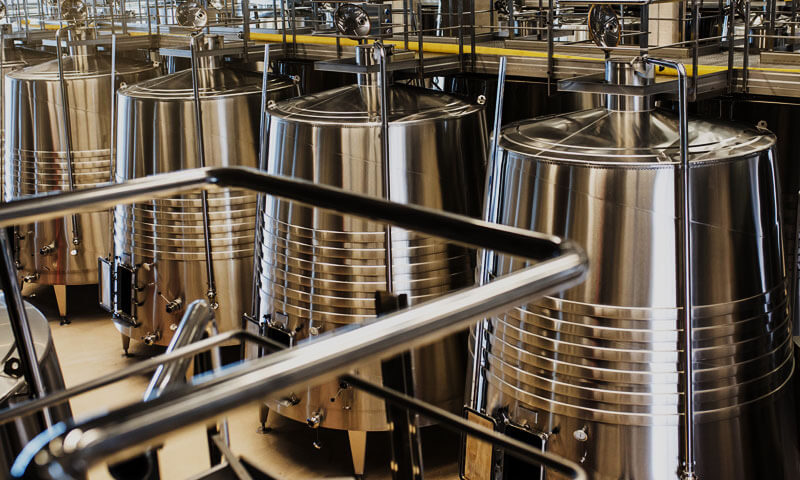Introduction
Stainless steel is a widely used and highly valued material, renowned for its remarkable combination of strength, durability, and corrosion resistance.
Thanks to these qualities, it plays a vital role in a broad spectrum of industries, from aerospace and automotive manufacturing to healthcare and kitchen appliances.
Selecting the right types of stainless steel ensures that products perform optimally and maintain their integrity under various conditions.
In this guide, we will dive deep into the different types of stainless steel, their characteristics, and how to choose the best grade for specific applications.
1. What is Stainless Steel?
At its core, stainless steel is an alloy primarily made up of iron and at least 10.5% chromium.
The chromium in the alloy forms a passive oxide layer on the steel’s surface, offering resistance to oxidation and rust.
In addition to chromium, other elements like nickel, molybdenum, and manganese are often added to enhance particular properties such as strength, ductility, and resistance to heat and corrosion.
2. Types of Stainless Steel
Stainless steel is primarily classified based on its microstructure and chemical composition, which directly influence its properties and applications.
Understanding these classifications is vital to selecting the right stainless steel for a specific purpose.
Austenitic Stainless Steel
Austenitic stainless steels are the most commonly used and versatile family of stainless steels, known for their excellent corrosion resistance, high ductility, and good formability.
They are the primary choice for applications requiring high levels of both strength and resistance to corrosion.
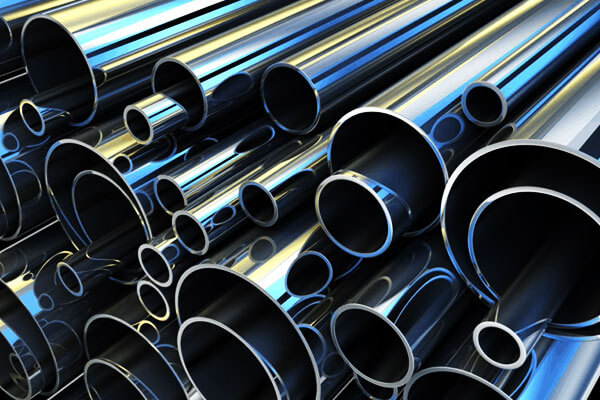
Structure:
- Face-Centered Cubic (FCC) crystal structure, which makes these steels non-magnetic and highly ductile.
Composition:
- Typically contain 16-26% chromium and 6-22% nickel, with some grades also containing molybdenum or nitrogen to enhance corrosion resistance.
Low carbon content (<0.1%) prevents carbide precipitation and improves the material’s weldability.
Properties:
- Excellent corrosion resistance in acidic and chloride-rich environments.
- Good weldability and formability, making them ideal for creating complex shapes.
- Non-magnetic.
- Can be cold-worked to increase strength.
Common Grades:
- 304: The most widely used grade, offering excellent corrosion resistance and versatility.
- 316: Contains molybdenum, providing superior resistance to pitting and crevice corrosion, especially in marine and chemical environments.
- 310: Known for its high-temperature resistance, often used in furnace parts and heat exchangers.
Ferritic Stainless Steel
Ferritic stainless steels are magnetic and offer good corrosion resistance and thermal conductivity.
They are known for being cost-effective but less ductile and harder to weld compared to austenitic steels.
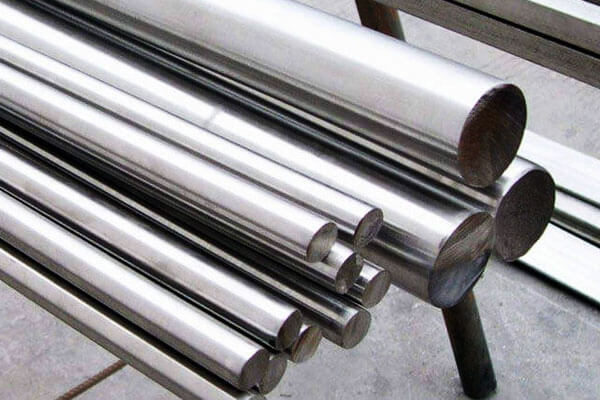
Structure:
- Body-Centered Cubic (BCC) crystal structure, which makes these steels magnetic.
Composition:
- Typically contain 10.5-30% chromium, with very low carbon content (<0.1%), making them more affordable than austenitic grades.
Properties:
- Good resistance to stress corrosion cracking and oxidation.
- Magnetic properties.
- Better thermal conductivity than austenitic grades but lower weldability.
- Limited formability.
Common Grades:
- 430: Widely used for appliances, automotive trim, and other applications requiring moderate corrosion resistance.
- 409: Often used in automotive exhaust systems due to its low cost and moderate corrosion resistance.
Martensitic Stainless Steel
Martensitic stainless steels are known for their high strength and hardness but offer lower corrosion resistance than austenitic and ferritic steels.
These steels can be heat-treated to improve their mechanical properties, making them suitable for applications requiring strength and hardness.
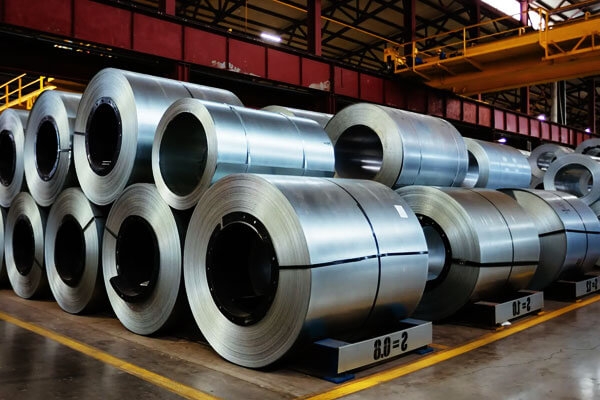
Structure:
- Body-centered tetragonal (BCT) crystal structure, which is magnetic and can be heat-treated to achieve high strength.
Composition:
- Typically contain 12-18% chromium, with 0.1-1.2% carbon. These steels have little to no nickel content, allowing them to be hardened through heat treatment.
Properties:
- High strength and hardness.
- Moderate corrosion resistance.
- Can be heat-treated to achieve a wide range of mechanical properties, but are more brittle compared to other stainless steel families.
Common Grades:
- 410: A general-purpose grade offering a balance of good corrosion resistance and high mechanical strength.
- 420: Often used for cutlery due to its ability to be polished to a high shine and maintain sharp edges.
- 440C: High carbon content makes it suitable for high-wear applications such as knife blades and industrial tools.
Duplex Stainless Steel
Duplex stainless steels combine the best features of both austenitic and ferritic stainless steels, offering high strength, excellent corrosion resistance, and good weldability.
The unique microstructure makes them particularly suitable for challenging applications.

Structure:
- A mixed microstructure of austenite and ferrite in approximately a 50:50 ratio.
Composition:
- Typically contain 18-28% chromium, 4.5-8% nickel, and up to 5% molybdenum, with low carbon content to reduce susceptibility to stress corrosion cracking.
Properties:
- High strength and excellent corrosion resistance.
- Resistant to stress corrosion cracking.
- Better weldability and formability than ferritic steels.
Common Grades:
- 2205: The most widely used duplex stainless steel, known for high strength and resistance to stress corrosion cracking.
- 2507: A super duplex grade offering even higher strength and resistance to corrosion.
Precipitation-hardening (PH) Stainless Steel
Precipitation-hardening stainless steels are unique due to their ability to be heat-treated to achieve high strength and toughness.
These steels undergo a phase transformation to form fine particles that enhance strength and hardness.
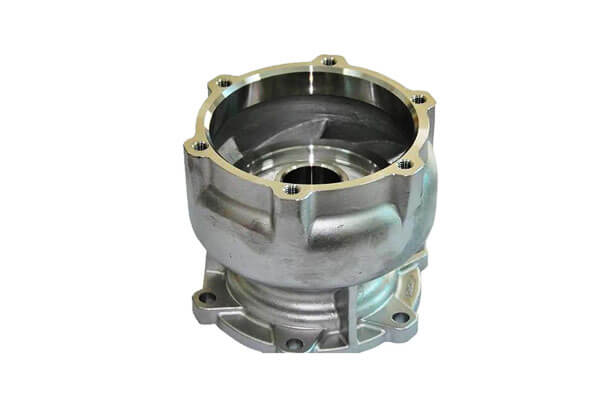
Structure:
- Can start as austenitic or martensitic and undergo a precipitation hardening process.
Composition:
- Alloyed with elements like aluminum, copper, and titanium, which form intermetallic compounds that precipitate during heat treatment.
Properties:
- High strength and toughness.
- Good corrosion resistance and mechanical properties.
- Can be heat-treated to achieve various strength levels.
Common Grades:
- 17-4 PH: Offers a good balance of strength and corrosion resistance, used widely in aerospace and military applications.
- 15-5 PH: Provides improved toughness compared to 17-4 PH and is often used in high-performance engineering parts.
3. Key Properties of Stainless Steel
The combination of stainless steel’s inherent strength, corrosion resistance, and aesthetic appeal makes it an ideal choice for numerous industrial, commercial, and consumer applications.
Corrosion Resistance
One of the most significant advantages of stainless steel is its corrosion resistance.
The primary reason for this is the presence of chromium, which forms a passive, thin oxide layer (chromium oxide) on the surface of the steel.
This protective layer prevents the steel from rusting, even in highly corrosive environments.
Types of Corrosion Resistance:
- General Corrosion Resistance: Stainless steel resists oxidation in both dry and wet environments, making it ideal for outdoor applications.
- Pitting and Crevice Corrosion: Some stainless steels, like 316, are especially resistant to pitting and crevice corrosion,
which can occur in chloride-rich environments (e.g., marine environments). - Stress Corrosion Cracking: Duplex stainless steels offer improved resistance to stress corrosion cracking, which is critical in industries such as oil and gas.
Strength and Durability
Stainless steel is known for its high tensile strength, meaning it can withstand significant mechanical stress and load-bearing situations.
Its strength and durability make it ideal for heavy-duty applications across construction, automotive, aerospace, and industrial equipment.
- High Mechanical Strength: Stainless steels, such as martensitic grades, offer exceptionally high strength, often used in applications requiring resistance to wear, abrasion, and high impact.
- Fatigue Resistance: Stainless steel maintains its strength over time, even under repeated cycles of loading and unloading. This is especially beneficial in structural applications.
Heat Resistance
Stainless steel can withstand high temperatures without losing its mechanical properties, making it suitable for applications in extreme heat environments.
- High-Temperature Stability: Certain grades of stainless steel, such as 310 and 321,
can operate effectively in high-temperature environments, maintaining their strength and resistance to oxidation. - Creep Resistance: Stainless steels also exhibit good creep resistance, which is the ability to resist slow deformation under a constant load at high temperatures.
Aesthetic Appeal
The appearance of stainless steel is another major selling point. Its sleek, modern look and ability to maintain a bright, polished surface make it popular in consumer-facing applications.
- Shiny Finish: Stainless steel surfaces are bright, resistant to staining, and can be easily cleaned, making them ideal for products that require a clean, professional look.
- Custom Finishes: Stainless steel can be polished, brushed, or treated with various finishes to achieve a desired appearance,
making it suitable for decorative applications such as architecture, interior design, and consumer goods.
Hygiene and Cleanliness
Stainless steel’s smooth, non-porous surface makes it easy to clean and maintain, a crucial factor in industries where hygiene is of utmost importance.
- Non-Reactive Surface: Stainless steel is non-reactive, meaning it doesn’t leach chemicals into food or beverages,
which is especially important in the food, beverage, and pharmaceutical industries. - Antibacterial Properties: Certain grades of stainless steel, like 316L, offer inherent resistance to microbial growth,
making it ideal for medical devices, food processing, and hospital equipment.
Formability and Machinability
Stainless steel is a highly versatile material that can be formed, welded, and processed in various ways.
While some grades are easier to work with than others, advancements in manufacturing have made stainless steel more adaptable.
- Weldability: Austenitic stainless steels like 304 and 316 are particularly known for their ease of welding and forming, making them ideal for complex structures.
- Formability: Stainless steel can be stamped, rolled, or drawn into almost any shape, providing flexibility for designers and engineers.
- Machinability: Though stainless steel can be harder to machine than carbon steel, certain grades like 303 (a free-machining grade) allow for ease in machining.
Environmental Benefits
Stainless steel is an environmentally friendly material because it is highly recyclable, making it a sustainable choice across industries.
- 100% Recyclability: Stainless steel is fully recyclable without losing its integrity, and a significant portion of the material used in production comes from recycled scrap.
- Reduced Environmental Impact: Modern stainless steel production methods,
including the use of electric arc furnaces, are becoming increasingly energy-efficient, contributing to reducing the overall carbon footprint of the material.
Resistance to Wear and Abrasion
Certain grades of stainless steel, particularly martensitic and precipitation-hardening steels, offer excellent wear resistance.
These properties make them highly effective in industries where parts undergo repeated friction or high wear.
- Abrasion Resistance: Stainless steel’s hardness and toughness enable it to resist wear, even under tough conditions like those found in mining and construction industries.
- Long Lifespan: The material’s ability to resist wear contributes to the longevity of products and structures, leading to lower maintenance and replacement costs.
Elasticity and Plasticity
Stainless steel is highly elastic, meaning it can return to its original shape after being stretched or bent. This property is critical for materials subjected to mechanical stress.
- Elastic Modulus: Stainless steel has a relatively high elastic modulus, which indicates that it remains stiff under stress, retaining its shape even in the most demanding applications.
- Ductility: Some grades of stainless steel are also highly ductile, meaning they can be stretched or shaped without breaking.
Magnetic Properties
While austenitic stainless steels (such as 304 and 316) are generally non-magnetic, martensitic and ferritic grades are magnetic.
This variation in magnetic properties allows stainless steel to be selected for specific applications based on the need for magnetism.
- Magnetic Stainless Steel: Ferritic and martensitic grades offer magnetic properties, which are useful in applications such as electrical components and magnetic shielding.
4. Applications of Stainless Steel
Stainless steel is a highly versatile material, finding applications across various industries
due to its unique combination of properties such as corrosion resistance, high strength, and aesthetic appeal.
Its ability to withstand extreme environments and retain its mechanical properties over time has led to its widespread use in the following key sectors:
Construction and Architecture
In construction, stainless steel is a go-to material for structures that must endure the elements and provide visual appeal.
Its ability to withstand harsh weather conditions while maintaining a sleek finish makes it indispensable in modern architecture.
- Structural Components: Stainless steel is commonly used for beams, columns, supports, and reinforcing bars.
For example, stainless steel is used in the construction of iconic buildings like the Burj Khalifa due to its strength and durability. - Exterior Cladding and Facades: Stainless steel’s shiny, polished surface makes it an attractive choice
for cladding the exteriors of commercial buildings, adding both aesthetic value and longevity. - Interior Design: Stainless steel is often used for architectural features such as railings, countertops, and kitchen components, where both strength and appearance are key.
Automotive and Transportation
The automotive and transportation industries demand materials that can withstand high stress, extreme temperatures, and exposure to chemicals.
Stainless steel excels in these conditions due to its strength and corrosion resistance.
- Exhaust Systems: Grades like 409 and 439 stainless steel are widely used in exhaust systems
due to their high resistance to heat and oxidation, offering extended durability in harsh conditions. - Automotive Body Components: Stainless steel is used in certain parts of car bodies for enhanced strength and corrosion resistance,
especially in regions prone to harsh weather and salt exposure. - Marine Applications: Stainless steel is a staple in marine environments due to its resistance to seawater corrosion.
Marine turbines, propellers, and hulls often incorporate stainless steel for both its durability and low maintenance.
Food and Beverage Industry
In the food and beverage industry, hygiene, strength, and corrosion resistance are paramount.
Stainless steel’s non-porous nature and ease of cleaning make it ideal for environments where sanitation is a top priority.
- Processing Equipment: Stainless steel is used extensively in the manufacturing of food and beverage processing equipment such as mixers, tanks, and conveyors.
Grades like 304 and 316 stainless steel ensure that the equipment remains hygienic and durable. - Storage Containers: Stainless steel is used for long-term food storage due to its resistance to corrosion and contamination, particularly in storage tanks and silos for grains and liquids.
- Kitchen Equipment: Stainless steel’s resistance to corrosion and ease of cleaning make it the material of choice for commercial kitchens, from countertops to sinks and appliances.
Medical and Pharmaceutical
The medical and pharmaceutical industries require materials that can endure sterilization, maintain integrity under pressure, and resist corrosion from bodily fluids or harsh chemicals.
- Surgical Instruments: Stainless steel is commonly used for surgical tools like scalpels, forceps, and needle holders.
Grades such as 420 are often chosen for their ability to maintain sharp edges and be sterilized effectively. - Medical Devices: Stainless steel is used in medical implants, stents, and prosthetics due to its biocompatibility, strength, and corrosion resistance.
- Pharmaceutical Equipment: Stainless steel’s hygiene properties make it an ideal choice for equipment used in pharmaceutical production and research,
such as autoclaves, storage tanks, and laboratory instruments.
Oil and Gas Industry
The oil and gas industry operates in environments where materials must withstand extreme pressure, temperature fluctuations, and corrosion.
Stainless steel provides the necessary durability and resistance for these challenging conditions.
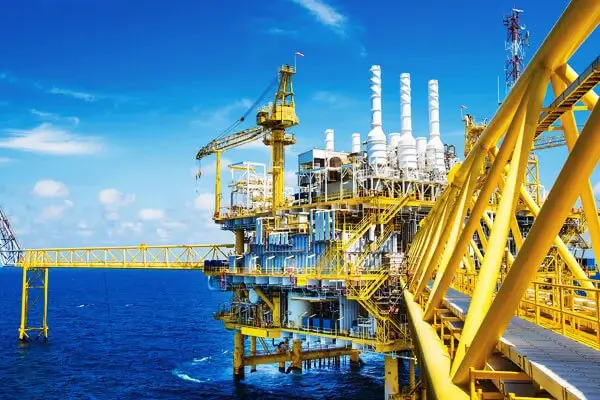
- Pipelines and Flow Lines: Stainless steel is often used for transporting oil and gas, especially in offshore platforms, due to its ability to resist seawater corrosion.
- Refinery Equipment: Heat exchangers, valves, and pressure vessels made from stainless steel help ensure safe and efficient chemical processing in refineries and petrochemical plants.
- Offshore Platforms: Stainless steel is used in the construction of offshore drilling platforms to resist the corrosive effects of seawater and high-stress environments.
Chemical Processing
In the chemical processing industry, stainless steel plays a critical role in handling aggressive chemicals and high temperatures.
- Reactors and Tanks: Stainless steel is used for the construction of reactors, storage tanks, and silos, which are essential in the production of chemicals, pharmaceuticals, and fertilizers.
- Piping Systems: Stainless steel piping ensures safe and reliable transport of reactive and corrosive substances in chemical plants.
- Heat Exchangers: The material’s resistance to heat and chemicals makes it perfect for heat exchangers that maintain efficient thermal transfer in chemical reactions.
Aerospace
The aerospace industries rely on materials that offer high strength-to-weight ratios, corrosion resistance, and durability under extreme conditions.
- Aircraft Components: Stainless steel is used in the manufacture of aircraft components such as engine parts, landing gear, and structural elements.
Its ability to withstand the stresses of flight, along with its resistance to high temperatures, makes it an essential material.
5. How to Choose the Right Types of Stainless Steel
Selecting the appropriate stainless steel grade is critical for ensuring performance, longevity, and cost-efficiency in any application.
With over 150 grades of stainless steel available, each optimized for specific environments and mechanical demands, the decision requires careful analysis.
Below, we break down the key factors, applications, and trade-offs to guide your selection process.
5.1. Key Factors to Consider
Corrosion Resistance
Stainless steel’s chromium content (minimum 10.5%) forms a passive oxide layer that resists rust. However, specific environments demand tailored grades:
Mild Environments (Indoor/General Use):
Grade 430 (Ferritic): Budget-friendly for non-critical indoor applications (e.g., decorative trim).
Harsh Environments (Marine, Chemical, Chlorides):
Grade 316 (A4): Adds 2–3% molybdenum for superior resistance to saltwater, acids, and industrial chemicals.
Duplex 2205: Combines high strength and chloride resistance for offshore oil rigs or desalination plants.
Extreme Conditions (High-Temperature Oxidation):
Grade 310 (Austenitic): Withstands temperatures up to 1,150°C (2,102°F) in furnaces or exhaust systems.
Mechanical Properties
Property Best Grades Applications
Strength 17-4 PH (Precipitation-Hardened) Aerospace fasteners, turbine blades
Hardness 440C (Martensitic) Surgical tools, bearings
Ductility 304L (Low Carbon) Deep-drawn kitchen sinks, automotive trim
Wear Resistance Nitronic 60 (Austenitic) Valve components, marine hardware
Temperature Tolerance
Cryogenic Applications: Austenitic grades (304, 316) retain toughness at -200°C (-328°F).
High-Temperature: Ferritic grades (446) resist scaling up to 900°C (1,652°F).
Fabrication Requirements
Welding:
Low-Carbon Grades (304L, 316L): Prevent carbide precipitation in heat-affected zones.
Stabilized Grades (321, 347): Titanium or niobium reduces sensitization during welding.
Machining:
Free-Machining Grades (303): Added sulfur improves machinability for screws and shafts.
Forming:
Austenitic Grades (304, 316): High ductility for stamping or bending.
5.2. Application-Specific Recommendations
Food & Beverage Industry
Grade 316: Resists acidic foods (citrus, vinegar) and CIP (clean-in-place) sanitizers.
Electropolished Finish: Smooth surface prevents bacterial growth in dairy processing.
Automotive
Exhaust Systems: Grade 409 (Ferritic) – Affordable, heat-resistant, and oxidation-resistant.
Trim & Fasteners: Grade 430 – Cost-effective for non-structural parts.
Medical & Pharmaceutical
Grade 316L VM (Vacuum Melted): Ultra-high purity for surgical implants.
Passivated Finish: Enhances biocompatibility and sterilizability.
Construction & Architecture
Structural Beams: Duplex 2205 – High strength-to-weight ratio for bridges.
Cladding: Grade 316 – Aesthetic and corrosion-resistant for coastal buildings.
5.3. Cost vs. Performance Trade-Offs
Grade Cost Corrosion Resistance Strength Typical Uses
430 $ Moderate Low Appliance trim, automotive
304 $$ Good Medium Tanks, kitchen equipment
316 $$$ Excellent Medium Marine, chemical plants
Duplex $$$$ Exceptional High Offshore platforms, pipelines
5.4. Step-by-Step Selection Process
Define the Environment:
Identify exposure to moisture, chemicals, temperature extremes, or mechanical stress.
Prioritize Properties:
Rank needs: Corrosion resistance > Strength > Fabricability > Cost.
Consult Standards:
ASTM, ISO, or NACE specifications often dictate material choices (e.g., NACE MR0175 for sour gas environments).
Test Prototypes:
Conduct salt spray (ASTM B117) or stress corrosion cracking (SCC) tests for validation.
5.5. Common Mistakes to Avoid
Over-Specifying: Using 316 in mild environments wastes the budget.
Ignoring Fabrication Limits: High-carbon martensitic steels (e.g., 440C) crack if welded improperly.
Neglecting Finish: A brushed or mirrored surface can enhance corrosion resistance.
5.6. Industry Standards & Certifications
ASTM A240: Standard specification for stainless steel plates.
ASME SA-182: Requirements for forged stainless steel fittings.
ISO 3506: Mechanical properties of corrosion-resistant fasteners.
6. Future Trends in Stainless Steel
As industries continue to evolve, so does the demand for advanced stainless steel alloys with improved properties. Key trends shaping the future of stainless steel include:
Increased Demand for Sustainable and Eco-Friendly Materials
With growing environmental concerns, stainless steel manufacturers are working towards reducing their carbon footprint.
There is a growing emphasis on recycling and adopting more energy-efficient production methods.
Stainless steel is inherently recyclable, and advancements in recycling technology aim to improve the material’s sustainability.
Development of High-Performance Alloys
Researchers are continuously working on the development of new stainless steel alloys that can perform better under extreme conditions.
This includes innovations such as super alloys designed to withstand extreme temperatures,
pressures, and corrosive environments—perfect for industries like aerospace and energy production.
Advanced Coatings and Surface Treatments
Future advancements are expected to enhance the already impressive corrosion resistance of stainless steel.
New coatings, such as nano-coatings, could provide even greater resistance to oxidation, wear, and corrosion, significantly extending the lifespan of stainless steel components.
Lightweight Materials for Transportation
There is a push towards producing lightweight stainless steel alloys that retain high strength for use in the automotive and aerospace sectors.
This includes innovations in hybrid materials and stainless steel alloys that combine strength with reduced weight to improve fuel efficiency without compromising performance.
3D Printing and Additive Manufacturing
3D printing technologies are revolutionizing the way stainless steel components are manufactured.
These methods allow for faster production times, greater design flexibility, and the ability to create complex, custom parts with minimal waste.
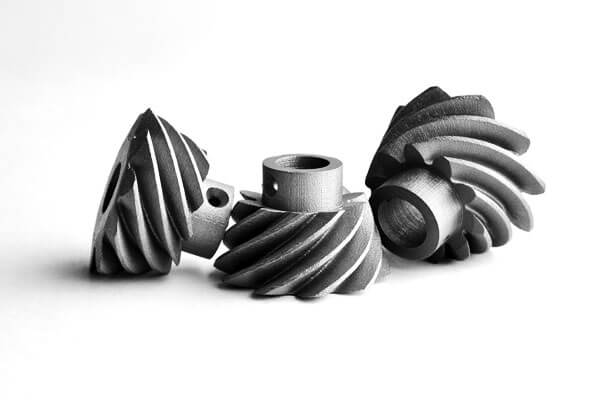
7. Conclusion
Stainless steel is an incredibly versatile material that continues to evolve,
meeting the demands of various industries by offering exceptional properties such as corrosion resistance, strength, and aesthetic appeal.
Whether you’re involved in construction, aerospace, automotive, or medical applications, stainless steel’s adaptability makes it an essential component in modern manufacturing.
As advancements in alloy development, sustainability, and manufacturing processes continue, stainless steel will remain a key material in shaping the future of industrial production.
If you’re looking for high-quality custom stainless steel products, choosing LangHe is the perfect decision for your manufacturing needs.
FAQs
Q: What is the most commonly used types of stainless steel?
A: 304 stainless steel is the most commonly used due to its excellent corrosion resistance, formability, and versatility.
Q: Can stainless steel rust?
A: While stainless steel is highly resistant to rust, it can still corrode under certain conditions, such as exposure to harsh chemicals or prolonged contact with saltwater.
Q: What is the difference between 304 and 316 stainless steel?
A: 316 stainless steel contains molybdenum, offering enhanced resistance to corrosion, particularly in marine environments and in industries dealing with chemicals and saltwater.
Q: Is stainless steel magnetic?
A: Certain stainless steel grades, such as martensitic and ferritic steels, are magnetic, while austenitic stainless steels are non-magnetic.
